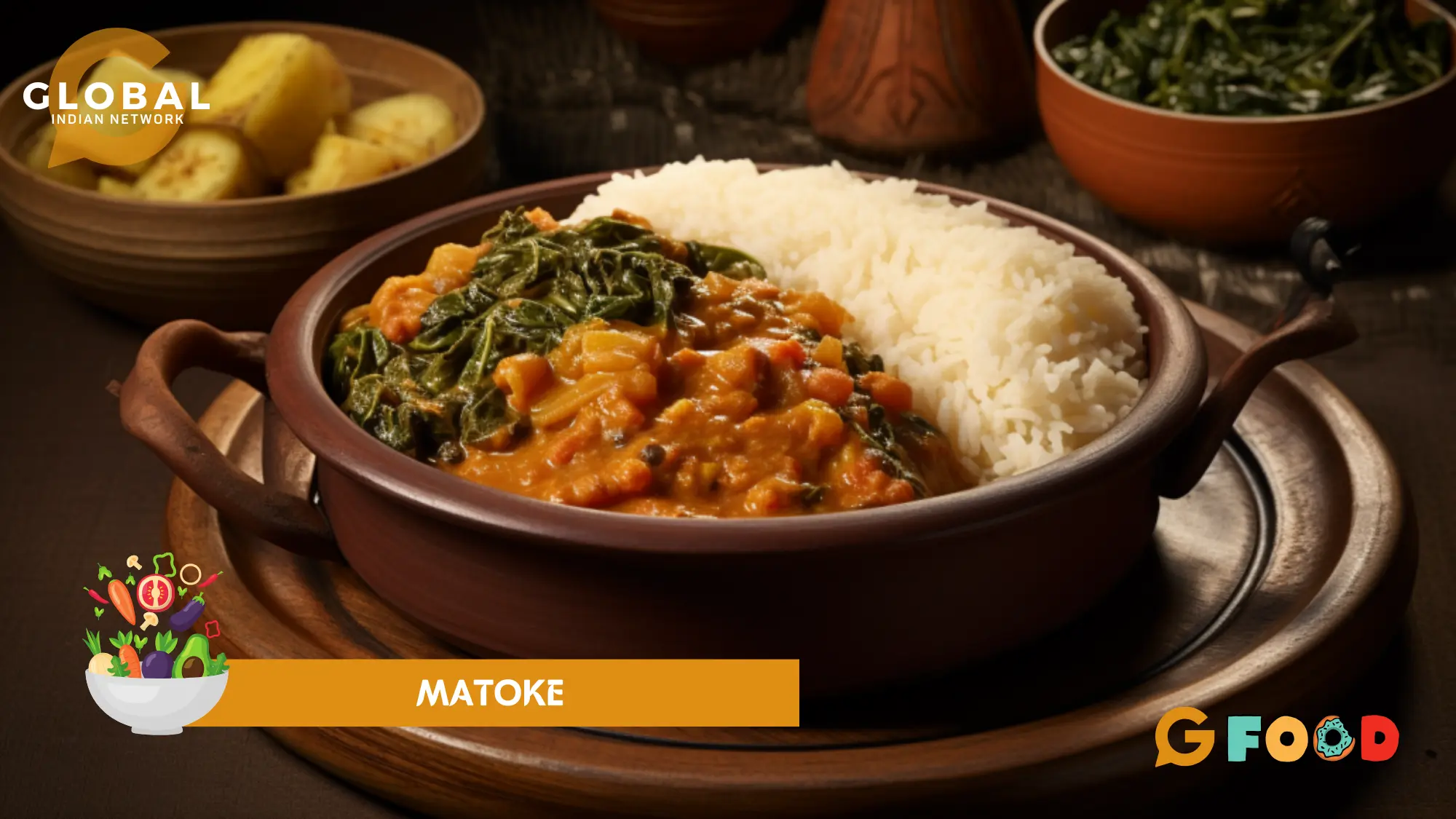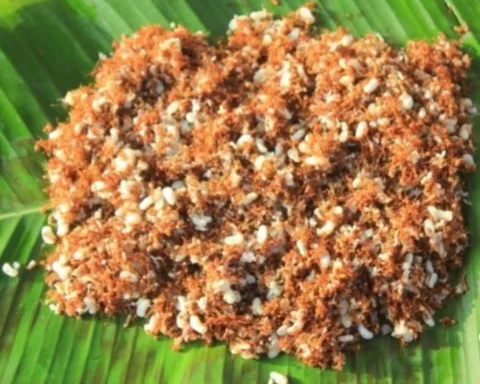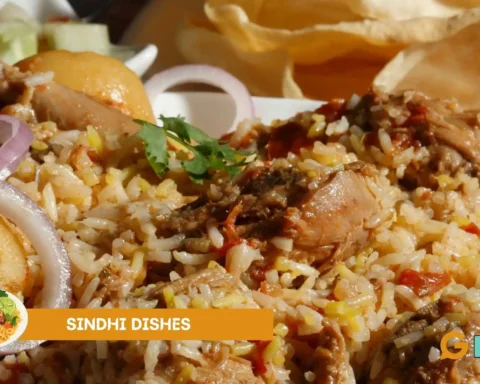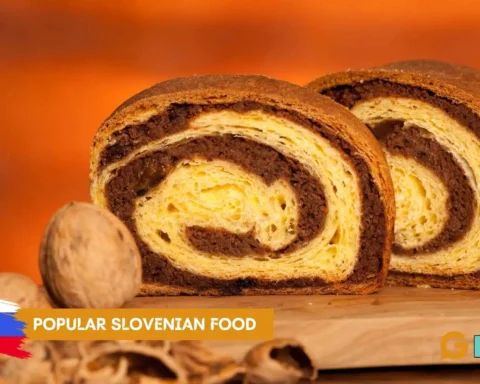Matoke is the staple food widely consumed in African countries. It is the variety of bananas, an important part of the region's cuisine and holds cultural significance. Matoke is different from the sweet dessert bananas that are found around the world. It is a cooked Green banana.
The unique ingredient is used in the preparation of various dishes. Depending on the texture and flavour, it is cooked in multiple ways, like boiling, steaming, and mashing. In East African countries such as Rwanda, Uganda, and Kenya is an essential component of traditional meals and is served as a main course. Let's learn more about this culturally significant staple food a little more.
Table of Contents
Origin of Matoke
The origin of Matoke is mixed with the agricultural and culinary traditions of East Africa. It holds significant cultural and nutritional importance. Its origin and spread include blending indigenous practices, historical trade, and cultural exchange. Bananas are believed to be originated from Southeast Asia and were gradually introduced to diverse parts of the world. Through trade and exploration, the Arab traders brought varieties of Matoke by ancient trade routes.
There was agricultural adoption that found a suitable environment for its cultivation. Equatorial areas and highlands are there. In which climate and soil conditions are conducive to banana growth. The local community has adopted the cultivation of the Matoke for its resilience and ability to grow in different conditions. With time, Matoke became an integrated national dish in the cuisine of East African societies. It is consumed in celebrations, traditional rituals, and communal gatherings also. Preparation and sharing of the Matoke is an essential social activity that brings people together.
Cultivation and Variety of Matoke
The cultivation of Matoke is a harmonious one between nature and human ingenuity, thriving through the fertile soil and temperate climate conditions in the landscape of East Africa. This crop needs the proper attention and care as farmers tend to each plant. This ensures enough growth. Matoke cultivation is shown as the balance between tradition and innovation. Farmers being the generation of agricultural knowledge, embrace modern techniques to improve yield.
Along with the realm of Matoke, the diverse varieties possess uniqueness and culinary potential. The variants showcase the remarkable difference between size, taste, and texture. It offers a vibrant palette of chefs and home cooks to explore. From the subtle sweet to the savoury, varieties of Matoke cater to a wide range of flavours. It adapts to the seamless culinary preferences of the communities to nourish as the Matoke continues to thrive in the ancestor homelands and beyond. The cultivation and variety remain a testament to the profound connection between the people, land, and sustenance.
Preparation and Cooking Techniques
Now let's know about the Matoke ingredients to prepare it properly. Some of them are listed below:
Ingredients
- Green banana
- Avocado oil
- Onion
- Garlic
- Red Bell Pepper
- Tomatoes
- Curry Powder
- Cayenne Pepper
- Cilantro
- Bouillon Cubes
- Water
Matoke is prepared by peeling the unripe bananas and chopping and cooking with seasonings like onions, tomatoes, garlic, and spices. The preparation process softens the bananas and infuses them with flavours of accompanying ingredients. This results in a savoury and wholesome dish. Sometimes, it can be cooked with meat, beans, and groundnuts to improve its nutritional value and taste.
Boiling is the standard technique used for Matoke preparation. The sliced Matoke is simmered in the water until it reaches the delicate balance between tenderness and firmness. During the process, the bananas absorb the flavours of spices, herbs, and seasonings added to the utensil creating a symphony of tastes to tantalize the palate. Steaming also offers an alternative approach that allows the Matoke to retain the natural moisture to embrace the aromas of the ingredients. It is wrapped in banana leaves and undergoes a slow metamorphosis that emerges from the infused fragrance.
Recently, culinary activities have introduced a contemporary adaptation in Matoke preparation. It can be stir-fried to achieve the caramelized touch to improve the natural sweetness and introduce a smoky flavour. To grill Matoke makes it the delightful contrast between the crispy exterior and creamy interior. The preparation and cooking techniques of the Matoke evoke a sense of artistry. Every slice and flavour pays homage to the generations before and after also. The matoke recipe is rich in flavours and also uses cayenne pepper.
In recent times, culinary creativity has breathed new life into matoke preparation, inspiring contemporary adaptations that honour tradition while embracing modern flavours. Matoke may be stir-fried to achieve a delightful caramelization, enhancing its natural sweetness and introducing a hint of smokiness. Grilling or roasting Matoke introduces a delightful contrast between the crispy exterior and the creamy interior, inviting a symphony of textures to dance on the taste buds. It embodies the vibrant spirit of East African culinary heritage.
Recipe of Matoke
Step 1: Peel the matoke and cut it into round or large chunks.
Step 2: Pan over medium heat. Add the avocado oil to it.
Step 3: Add Cayenne pepper, which can be replaced with paprika powder. Cook for 1 minute until the fragrance of spices comes. Add garlic, ginger, bell pepper, and fresh tomatoes.
Step 4: Mix the green bananas well and add 2 tablespoons of oil.
Step 5: Pour 2 cups water and stir it. Boil the mixture and cover the saucepan with a lid. Decrease the heat and let the mixture cook on low heat for 25 minutes till the bananas become soft.
Step 6: Serve the dish on banana leaves or a plate.
If you want to try other recipes, try making them. In them, alternatives can be used. Various other delicious recipes can be made. Like pairing the matoke with the peanut sauce to make it a filling meal. Red bell pepper can be replaced with yellow or green bell pepper.
Social and Cultural Significance
The social and cultural significance of Matoke extends far beyond the role. It is not a mere food source. This staple crop holds a profound place in the hearts and lives of the people as it nourishes and embodies the values, rituals, and connections that transcend culinary boundaries. Matoke is more than a substance but a symbol of unity and togetherness. The preparation and consumption catalyze communal gatherings and foster a sense of shared experiences.
Family and community come together to peel, chop and cook, which creates bonding and strengthens social ties. It is cooked in everyday meals or during the festivals. The presence of the Matoke signifies nourishment and a sense of interconnectedness. Regarding cultural significance, Matoke is deeply rooted in the heritage of East African regions and society. It has found its way into the traditional rituals, ceremonies, and passages rites. All this has become an essential role in life's important milestones. From weddings to funerals and festivals, Matoke is made the symbol of a cherished cultural icon.
Health Benefits of Matoke
Matoke provides various health benefits due to its nutritional value. Below are a few benefits mentioned:
- They are rich in nutrients like vitamins A, C, B6, magnesium, dietary fibre, and minerals.
- It is digestive as it promotes healthy digestion, prevents constipation, and supports regular bowel movement.
- Matoke is good for the heart. It is low in fat and sodium. High in potassium that regulates blood pressure. It helps to counterbalance sodium's effects and contributes to cardiovascular health.
- It is also a good energy source, providing a steady energy source for physical activities and daily functions.
- These green cooking bananas include high fibre, suitable for those who want to lose weight.
- Matoke, an East African crop, is also a source of starch which keeps cholesterol levels low.
Economic and Agricultural Aspects
The economic and agricultural aspects of Matoke play an important role. It shapes the East Africa region's local economies, livelihoods, and food security. The versatile and resilient African food crop contributes to income generation and agriculture sustainability. The economic contribution to the cultivation is an essential source of income for the farmers in East Africa.
Export and trade are also promoted. The commercial value extends beyond the local markets. With exports, it contributes to foreign exchange earnings also. Crop adaptability to various climates and soil kinds makes it a viable option for export. It allows the East African countries to tap into the global market. This trade promotes economic growth and improves international relations.
Matoke cultivation also contributes to agricultural diversity. It decreases the dependency on a single crop and promotes sustainable farming practices. The cultivation often includes intercropping with the other crops that improve the soil health, reduce the pest pressure, and enhance the overall farm resilience. Agriculture diversity contributes to Matoke cultivation, decreasing dependency on a single crop. It also promotes sustained farming practices.
Global Awareness and Sustainability
Matoke, interchangeably known as Matooke or the cooking banana, holds a significant position in the culinary landscape of East Africa, deriving from the essence of unripe bananas. It includes the cultural, economic, and nutritional importance of the regions. Global awareness and sustainability of Matoke include the considerations related to the cultivation, consumption, and effect on the environment and local communities.
The cultivation and agriculture include biodiversity and agroecological practices. An important crop that contributes to East Africa's biodiversity, sustainable cultivation enables to maintain the biodiversity and genetic resources. It also promotes agroecological practices like organic farming and crop rotation. It also improves the Matoke production sustainability and decreases the use of synthetic fertilizers and pesticides.
Conclusion
Among the variety of bananas, Matoke is a symbol of cultural heritage. It includes all the nutritional values. From being the staple food to having rich nutrients and health benefits, there is a harmonious blend of traditions and modern nutrition. To enjoy its delightful flavours and embrace culinary diversity is equally important to consider the sustainability of Matoke cultivation. Responsible practices also foster awareness and incorporate the Matoke into a well-balanced diet.
FAQs
What is a Matoke?
Matoke is an African staple food. It is the variety of bananas cooked during special events or festivals.
What does Matoke consist of?
It is a dish made from green bananas and rich in flavours, including tomatoes, cayenne pepper, curry powder, etc.
What is the history of Matoke?
Matoke, a staple in East African cuisine, holds a rich history dating back centuries, tracing its roots to indigenous cultures and becoming a fundamental ingredient in regional dishes. It has evolved from a traditional fare to a cherished culinary heritage, symbolizing the cultural and gastronomic diversity of the region.
Why is Matoke important to the culture?
Beliefs and traditions surround the production of Matoke. For instance, certain banana varieties play an important role in rituals.











[…] culinary delights reflect its diverse culture and fertile land. Staple foods include matoke (cooked green bananas), posho (maize porridge), and ugali (a stiff maize porridge). Popular dishes […]
[…] Bananas (cooked to make the staple food matoke wrapped in banana leaf), pineapples, beans, cassava, sweet potatoes, cabbage, and spinach are […]